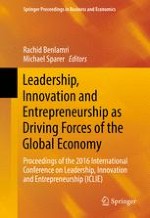2017 | OriginalPaper | Chapter
65. Information Systems Strategies to Reduce Financial Corruption
Authors : Ali Abdulbaqi Ameen, Kamsuriah Ahmad
Published in: Leadership, Innovation and Entrepreneurship as Driving Forces of the Global Economy
Publisher: Springer International Publishing
Activate our intelligent search to find suitable subject content or patents.
Select sections of text to find matching patents with Artificial Intelligence. powered by
Select sections of text to find additional relevant content using AI-assisted search. powered by
